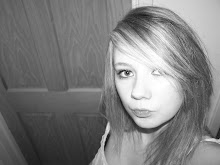Story board Language
Below are the different shot that could be used when using a camera to shoot an film.
CLOSE-UP SHOT: A close range of distance between the camera and the subject.
DISSOLVE: A transition between two shots, where one shot fades away and simultaneously another shot fades in.
FADE: A transition from a shot to black where the image gradually becomes darker is fade out; or from balck where the image gradually becomes brighter is a Fade In.
HIGH CAMERA ANGLE: A camera angle which looks down on its subject making it look small, weak or unimportant.
JUMP CUT: A rapid, jerky transition from one frame to the next, either disrupting the flow of time or movement within a scene or making an abrupt transition from one scene to another.
LEVEL CAMERA ANGLE: A camera angle which is even with the subject; it may be used as a neutral shot.
LONG SHOT: A long range of distance between the camera and the subject, often providing a broader range of the setting.
LOW CAMERA ANGLE: A camera angle which looks up at its subject; it makes the subject seem more important and powerful.
PAN: A steady, sweeping movement from one point in a scent to another.
POINT-OF-VIEW-SHOT: A shot which is understood to be seen from the point of view of a character within the scene.
REACTION SHOT: E ither a shot of someone looking of screen or as a shot of someone in a conversation where they are not given a line of dialogue but are just listening to the other person speak.
TILT: Using a camera on a tripod, the camera moves up or down to follow the action.
ZOOM: Use of the camera lens to move closely towards the subject.
Sunday, 6 December 2009
Subscribe to:
Post Comments (Atom)

No comments:
Post a Comment